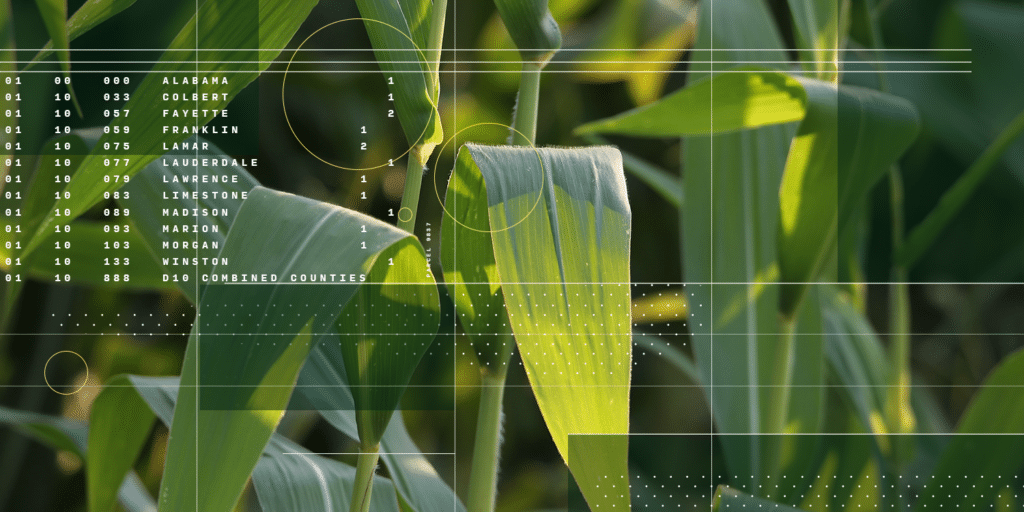White Paper
Academic Article: Mid-20th Century Warming Hole Boosts US Maize Yields
June 28, 2022

Get the latest from CIBO. Stay connected with news, expert insights and exclusive event invitations.
SubscribeAuthors: Trevor F Partridge, Jonathan M Winter, Lin Liu, Anthony D Kendall, Bruno Basso and David W Hyndman
First published: November 2019
Abstract
The Corn Belt of the United States, one of the most agriculturally productive regions in the world, experienced a globally anomalous decrease in annual temperatures and a concurrent increase in precipitation during the mid- to late-20th century. Here, we quantify the impact of this 'warming hole' on maize yields by developing alternative, no warming hole, climate scenarios that are used to drive both statistical and process-based crop models. We show that the warming hole increased maize yields by 5%–10% per year, with lower temperatures responsible for 62% of the simulated yield increase and greater precipitation responsible for the rest. The observed cooling and wetting associated with the warming hole produced increased yields through two complementary mechanisms: slower crop development which resulted in prolonged time to maturity, and lower drought stress. Our results underscore the relative lack of climate change impacts on central US maize production to date, and the potential compounded challenge that a collapse of the warming hole and climate change would create for farmers across the Corn Belt.
Conclusion
Understanding the dynamic relationship between agricultural productivity and regional climate is of critical importance given the challenges imposed by population growth, shifting diets, and climate change. Here we find that the 20th century trend in US maize yield was significantly aided by anomalously cool temperatures and increased growing season precipitation. These results expand upon those of Butler et al (2018), who use a statistical crop model to show that increased minimum temperatures and a reduction in maximum temperature extremes since 1980 have been beneficial to maize yields. We find that this agriculturally pleasant climate extends back to 1958 and also quantify the importance of a simultaneous increase in growing season precipitation. We further identify both prolonged maturity time and reduced water stress as the physiological mechanisms responsible for the yield benefit. It is unlikely that the pleasant climate observed during the latter half of the 20th century will substantially persist into the future. Although maximum growing season temperatures in the Corn Belt continue to increase at a slower rate than minimum temperatures, possibly due to agricultural expansion (Mueller et al 2015, Alter et al 2018, Nikiel and Eltahir 2019), annual temperatures are projected to increase by 2.3 °C by mid-century (RCP 4.5; Vose et al 2017). Summer precipitation in the region is projected to decrease by approximately 10% while extreme events will likely increase (Easterling et al 2017).
The dramatic improvements in technology and management practices across the US Corn Belt produced remarkable increases in maize yield and productivity. However, we show that a contemporaneous climate anomaly referred to as the US ‘warming hole’, which translated to more advantageous weather in the region, also contributed to yield increases. We find that the warming hole resulted in an increased median annual maize yield of 5%–10%, primarily in response to decreased growing season temperatures and decreased heat extremes. SALUS driven with counter-factual scenarios isolating the increase in precipitation and decrease in temperature indicate that cooler temperatures were responsible for 62% (and thus increased precipitation was responsible for 38%) of the simulated yield increase across most of the Corn Belt. As the central US prepares to adapt to substantial projected increases in temperatures by the end of the 21st century, it is essential to understand the extent that the US warming hole has historically benefitted maize yields. Our results underscore the relative lack of climate change impacts on central US maize production to date, and the potential compounded challenge that a collapse of the warming hole and climate change would create for farmers across the Corn Belt.
Academic Citation
- Partridge, T.F., Winter, J.M., Liu, L., Kendall, A.D., Basso, B., Hydnman, D. (2019). Mid-20th century warming hole boosts U.S. maize yields. Environmental Research Letters. doi: 10.1088/1748-9326/ab422b